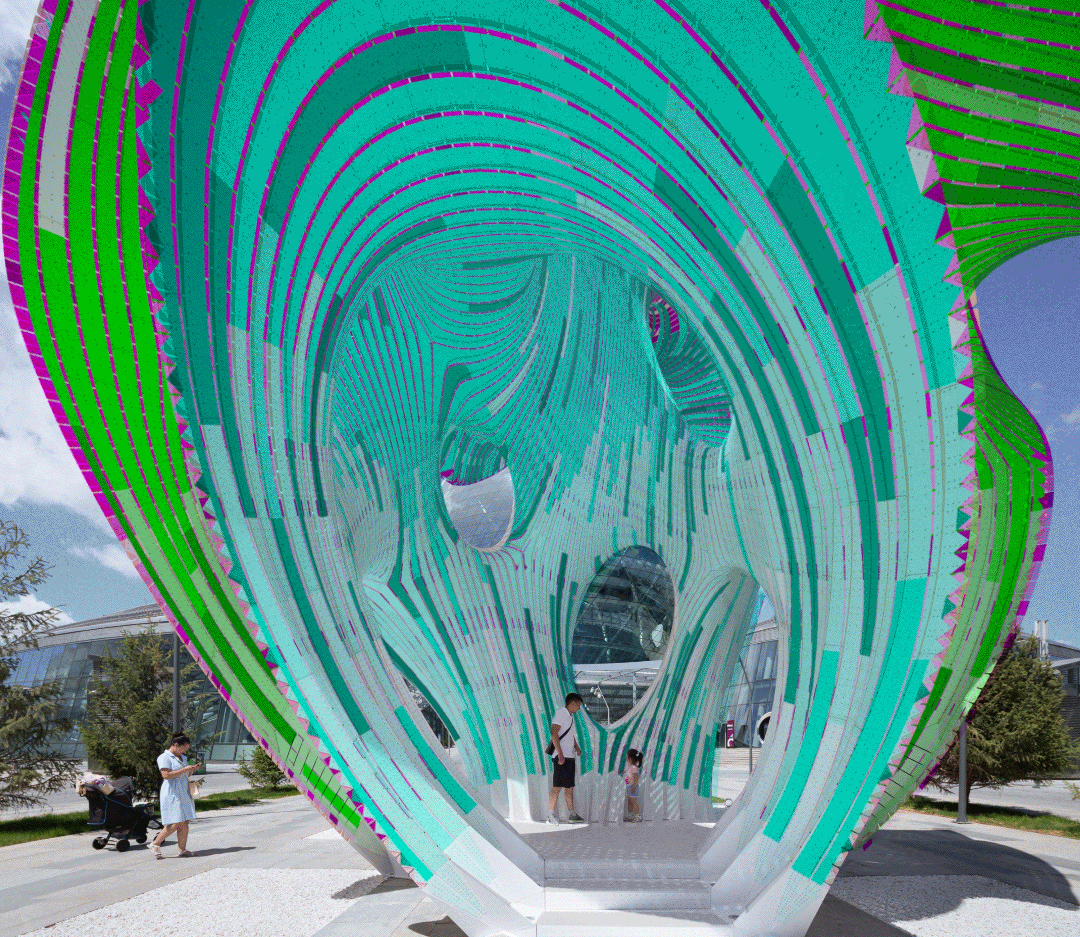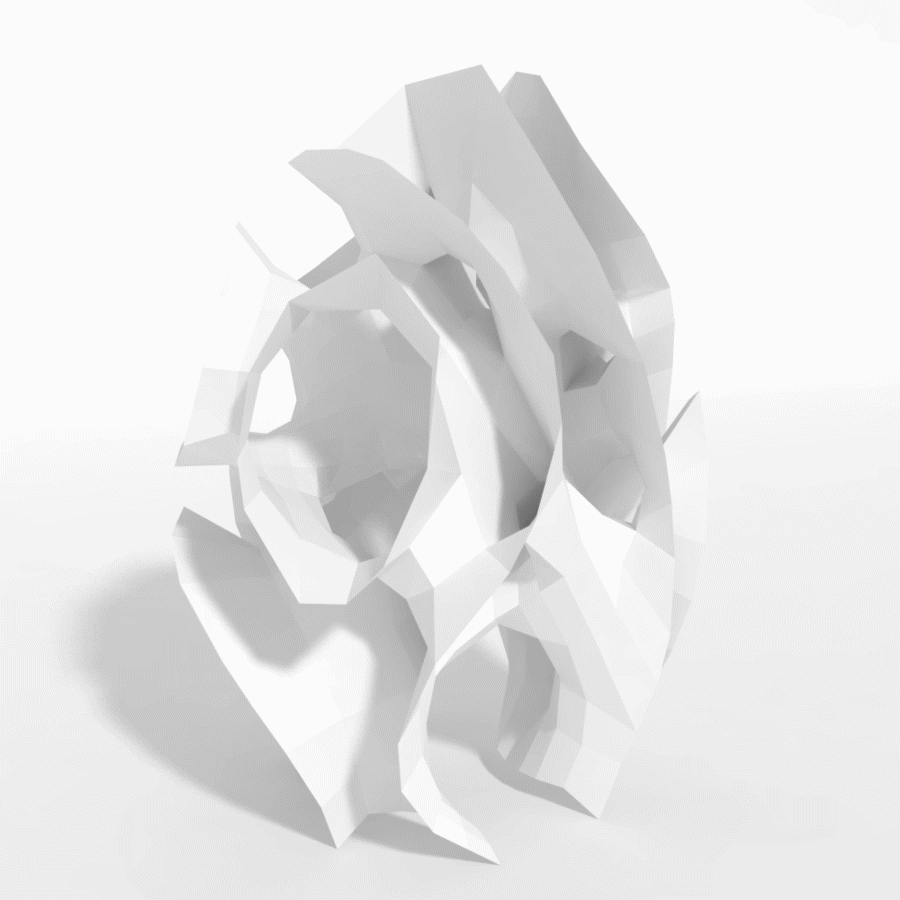minima | maxima
WORLD expo PAVILION (Permanent)
ASTANA, KAZAKHSTAN
DESIGN BY MARC FORNES / THEVERYMANY
Commissioned by Epazote Sa. Vladislav Sludskiy for World Expo 2017
All images Copyrights by THEVERYMANY x NAARO
(No use or reproduction allowed without written authorization)
Minima | Maxima is the latest Structural Stripes "Crawling Assembly'" from MARC FORNES / THEVERYMANY. This permanent installation provides a moment of contemplation amid the busy grounds of World Expo 2017 in Astana, Kazakhstan.
Why, among visitors of all ages, does it seem instinctive to engage the structure playfully? For instance, to tuck one's body inside a pleat at the base, assuming a contorted curved form that matches the structure itself. To be inside Minima | Maxima is to be transported to a strange future, a science fiction world, removing us from ourselves and finding a sense of naive wonder within. The project is radically different than the built environments we know. The impulse is to explore, to visually wander. Transformed into a childlike state, visitors can do so without the pretense of reference or concepts, employing instead the potent investigative powers of our senses.
The project extends MARC FORNES / THEVERYMANY's research and development efforts to achieve structural integrity through ultra-thin, self-supporting assemblies, which find strength in the double curvature of their form. In the whimsical yet durable universe the studio creates, curves win out over angles. Branches, splits and recombinations make columns and beams irrelevant. A 'networked' surface rolls in, on and around itself, transforming into a space that upends preconceived notions of enclosure, entrance/exit, and threshold, while also providing its own support. It bends in all directions, but still manages to stand upright on its own.
TALLEST-EVER CONSTRUCTION FROM MATERIAL AS THIN AS A COIN CHALLENGES HOW WE UNDERSTAND STRUCTURE AND SPACE
This surface is ultra-thin: just 6 mm of aluminum. If an egg were scaled up to the same height Minima | Maxima, it would be much thicker.
Towards the base of the structure, the rolling surface begins to softly corrugate, its zig-zag angles gently rising into a full pleat as they meet the ground platform. The visual threshold of this transition -- from pleated base to smooth and doubly-curved, continuous surface -- is subtle, yet its structural effect is significant in achieving the height of 43'.
<>
The project is a multi-ply composite: three layers of flat stripes -- white and white sandwiching pink -- are constructed in tandem, supporting one another as they assume curvature and gain height. One layer never exists independently, but contributes to and benefits from the unified whole. The stripes of each layer move perpendicularly from one another, creating an anistropic composite material (structural property of composite depends on direction) from an isotropic material, such as aluminum (properties of material are mostly the same in all directions).
The system warrants comparison to fiber technology -- such as carbon or glass fiber -- yet is unique in that unlike fibers, each individual component does not need to be in tension (a straight line), and/or their processing does not require any mold or temporary scaffolding. Also such a composite system is mechanically bonded, allowing for recomposition and corrections during construction.
All images Copyrights by THEVERYMANY and NAARO (No use or reproduction allowed without written authorization)
Surface development (above) and intitial sketches (below)














